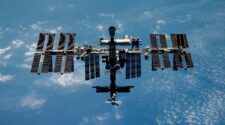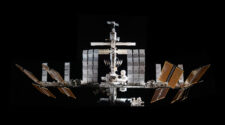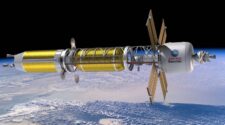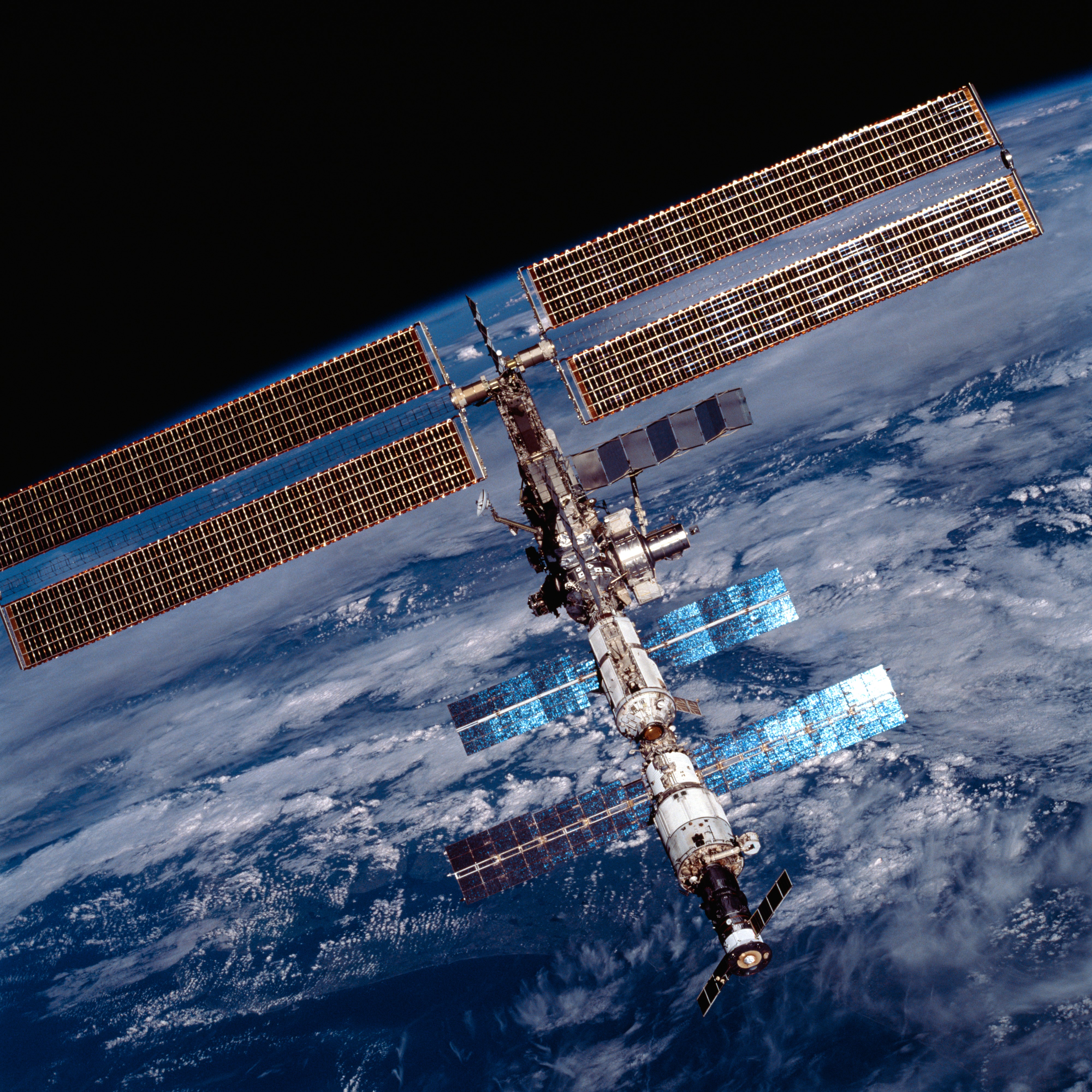
The largest and most complex international construction project in space began on the steppes of Kazakhstan 20 years ago today. Atop its Proton rocket, on Nov. 20, 1998, the Zarya Functional Cargo Block thundered off its launch pad at the Baikonur Cosmodrome to serve as a temporary control module for the nascent International Space Station. Nine minutes later, Zarya was in orbit and began unfurling its antennas and solar panels, seemingly coming alive in the airless environment of low Earth orbit. The launch of the first element of the Space Station kicked off an incredible journey of orbital assembly, operations and science.
For two decades, the International Space Station has been circling the Earth every 90 minutes from an orbit of approximately 250 miles. The ISS has been humanity’s platform to learn about living in space, as well as observing the Earth and performing research that has benefited us here on terra firma.
It is a unique place – a convergence of science, technology and human innovation that demonstrates new technologies and makes research breakthroughs not possible on Earth. It is a microgravity laboratory in which an international crew of three to six people live and work while traveling at a speed of five miles per second, orbiting Earth every 90 minutes.
The space station has been continuously occupied since November 2000. In that time, 222 people from 18 countries have visited. Crew members spend about 35 hours each week conducting research in many disciplines to advance scientific knowledge in Earth, space, physical, and biological sciences for the benefit of people living on our home planet.
An international partnership of space agencies provides and operates the elements of the ISS. The principals are the space agencies of the United States, Russia, Europe, Japan, and Canada. The ISS has been the most politically complex space exploration program ever undertaken. The ISS Program brings together international flight crews, multiple launch vehicles, globally distributed launch, operations, training, engineering, and development facilities; communications networks, and the international scientific research community.
Elements launched from different countries and continents are not mated together until they reach orbit, and some elements that have been launched later in the assembly sequence were not yet built when the first elements were placed in orbit. Each partner has the primary responsibility to manage and run the hardware it provides. Construction, assembly and operation of the International Space Station requires the support of facilities on the Earth managed by all of the international partner agencies and countries involved in the program.
The space station remains the springboard to NASA’s next great leap in exploration, enabling research and technology developments that will benefit human and robotic exploration of destinations beyond low-Earth orbit, including asteroids and Mars. It is the blueprint for global cooperation – one that enables a multinational partnership and advances shared goals in space exploration.
As a collection of modules and components assembled piece by piece, the ISS has been an active construction project for its entire existence. Transformed over and over again with the arrival of new modules and solar arrays, the space station has been reconfigured by astronauts nearly as often as a child’s building block set.
We’ve put together a gallery of 20 photos showing some of the various assemblies of the International Space Station throughout the past 20 years. Enjoy.
Two decades in space and counting
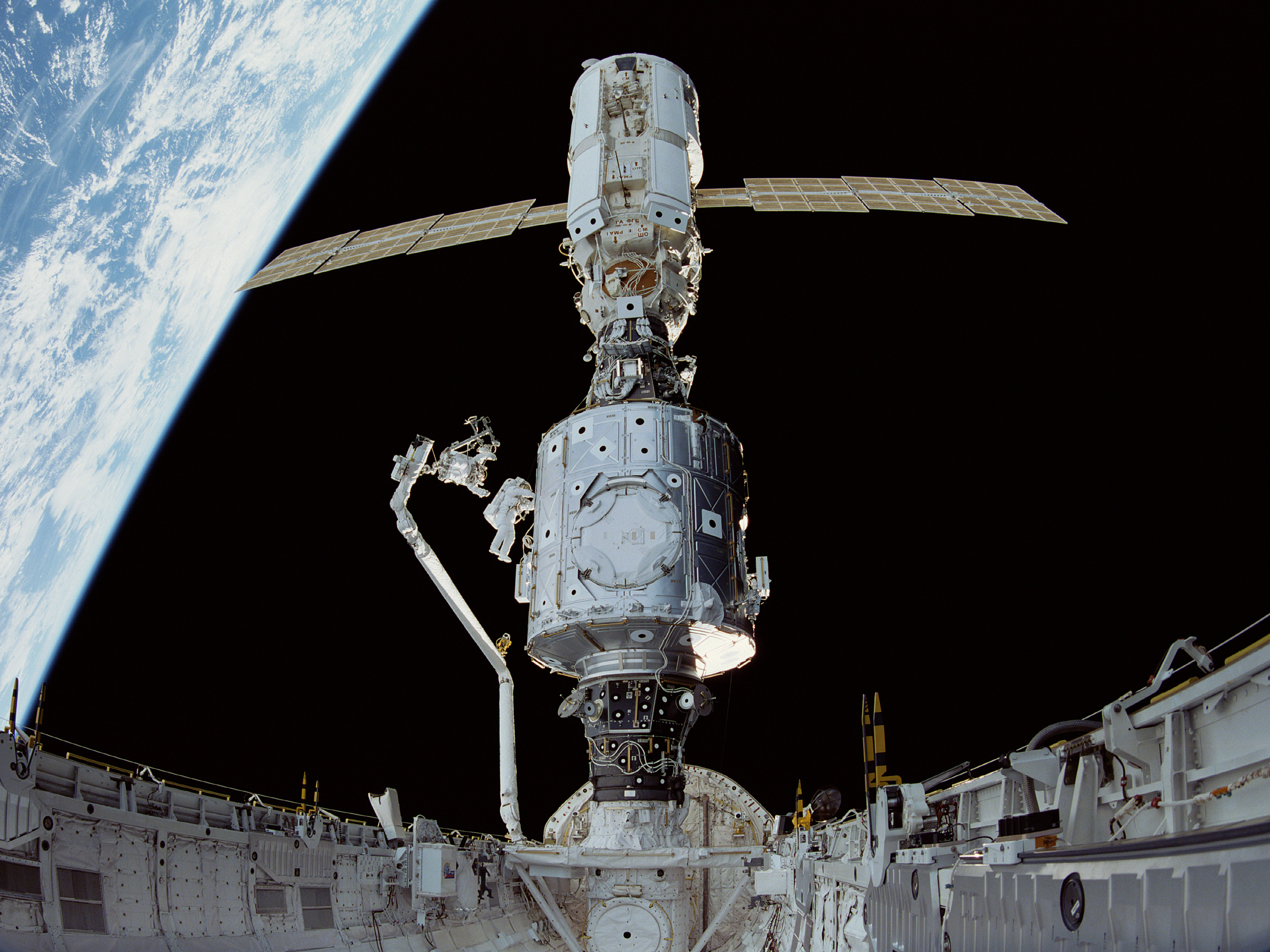
An international mating – December 7, 1988
Astronauts from the Space Shuttle mission STS-88 work on the embryonic International Space Station, hours after connecting the first element – the Russian-built Zarya FGB control module with the American built Node 1 Unity module in December 1998. The crew carried a large-format IMAX camera from which this picture was taken. NASA astronaut James Newman is working on communication cables on Unity while fellow crew member Jerry Ross monitors his progress.
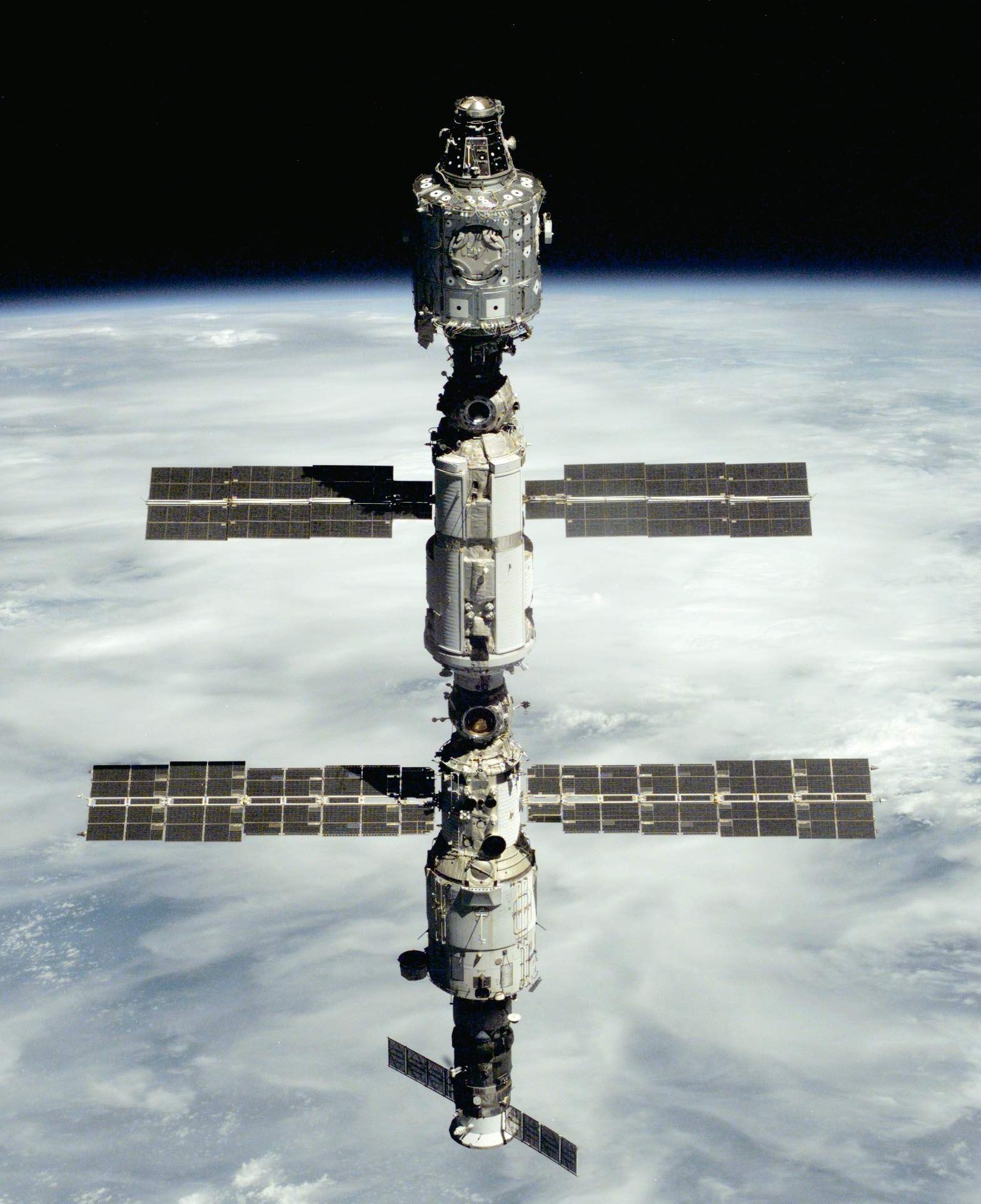
Preparing a new home – September 18, 2000
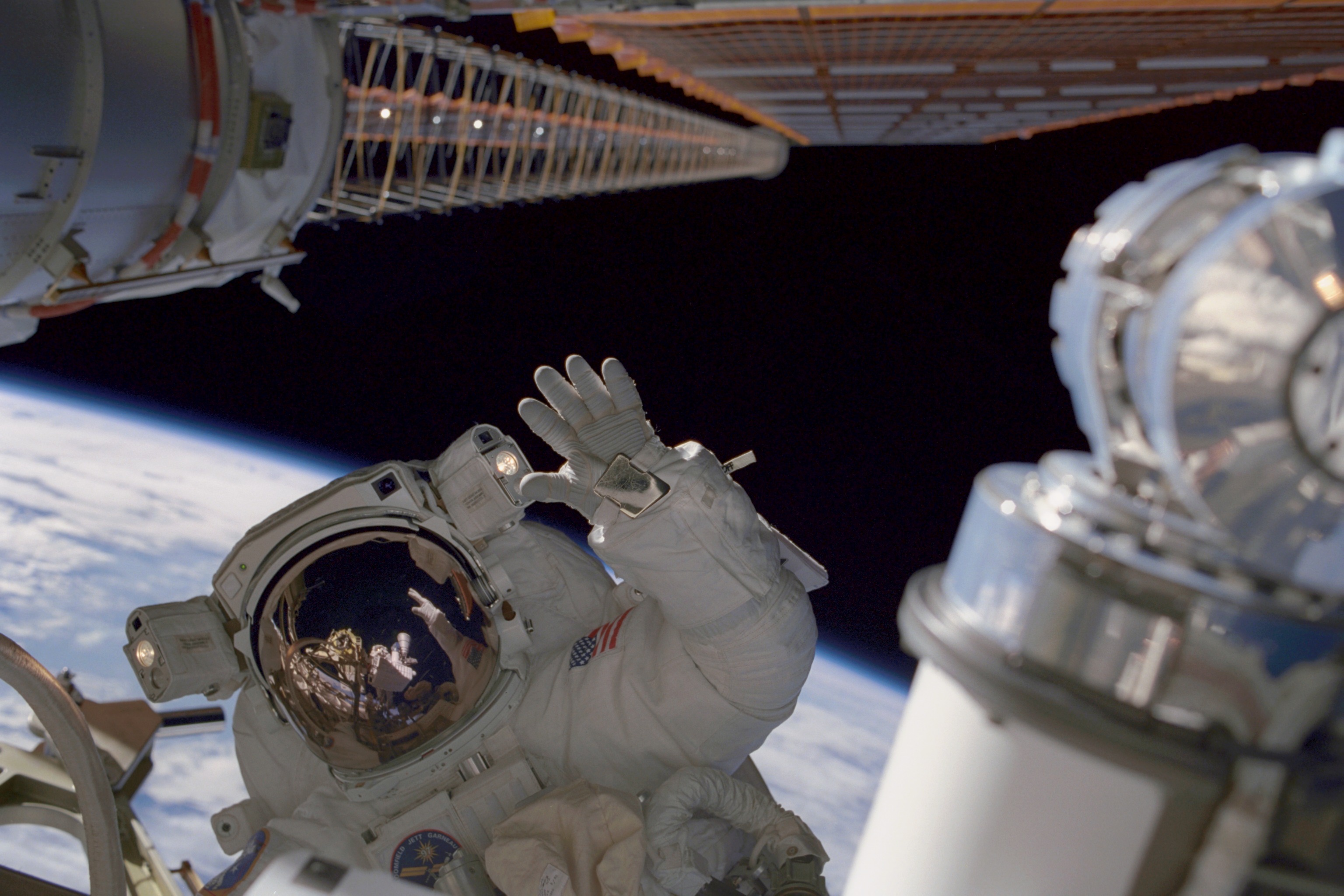
Powering up with solar energy – December 5, 2000
Astronaut Carlos I. Noriega, mission specialist, waves during the second of three spacewalks on STS-97. During the 11-day mission, the Space Shuttle crew delivered and connected the first set of U.S. solar arrays to the International Space Station. The astronauts completed three spacewalks in total, during which they prepared a docking port for arrival of the Destiny Laboratory Module, installed Floating Potential Probes to measure electrical potential surrounding the station, installed a camera cable outside the Unity Module, and transferred supplies, equipment and refuse between Endeavour and the ISS.
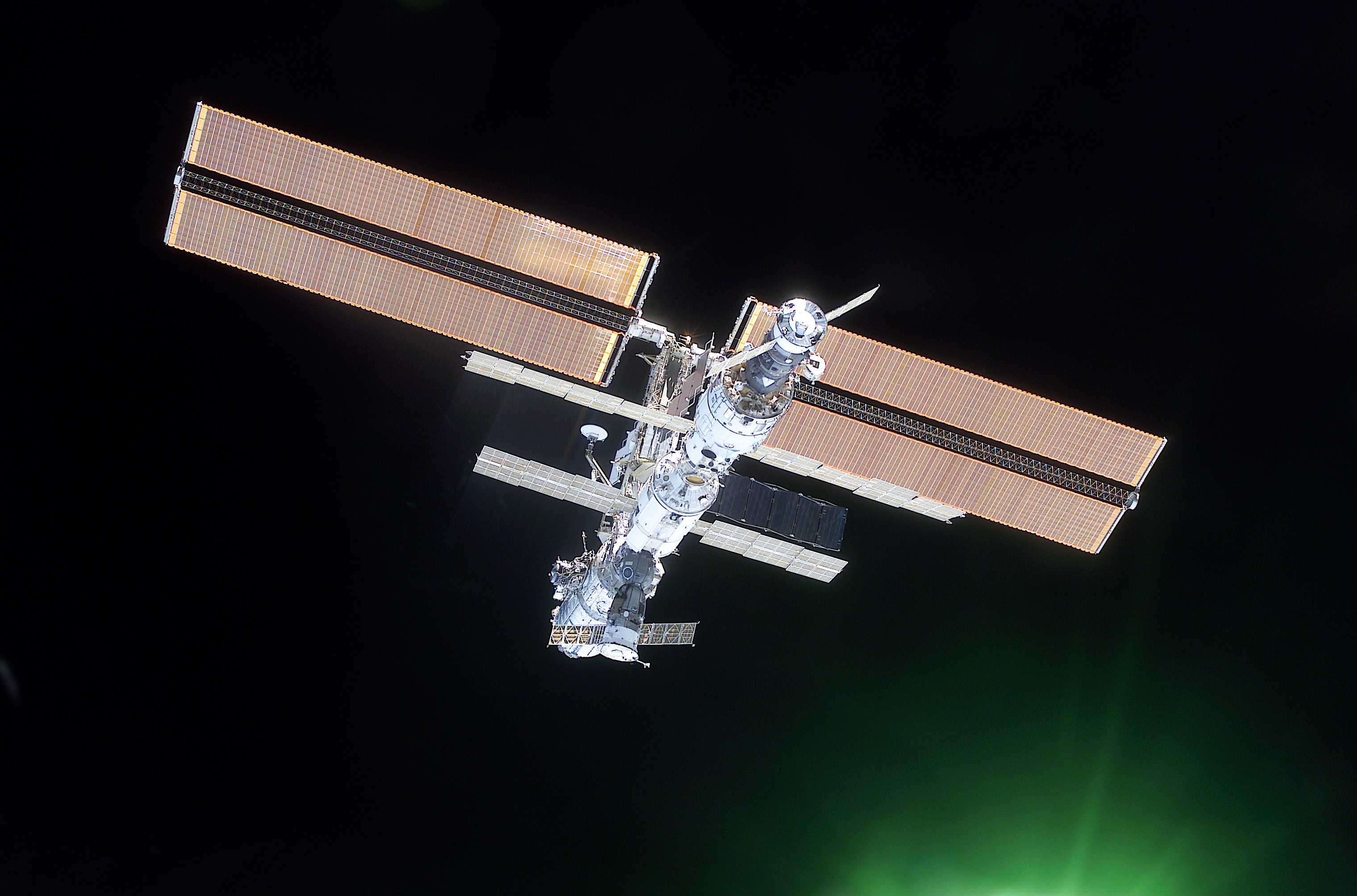
Departing glow – March 18, 2001
The International Space Station backdropped against black space was photographed with a digital still camera from the Space Shuttle Discovery on March 18, 2001. It was a standard practice for the shuttle to make a final fly-around of the outpost following unlinking from it. The mission’s main purpose was to swap the Expedition 1 and Expedition 2 crews, as well as resupply the ISS. It also marked the first use of the Multi Purpose Logistics Module (Leonardo) to bring supplies to the station.
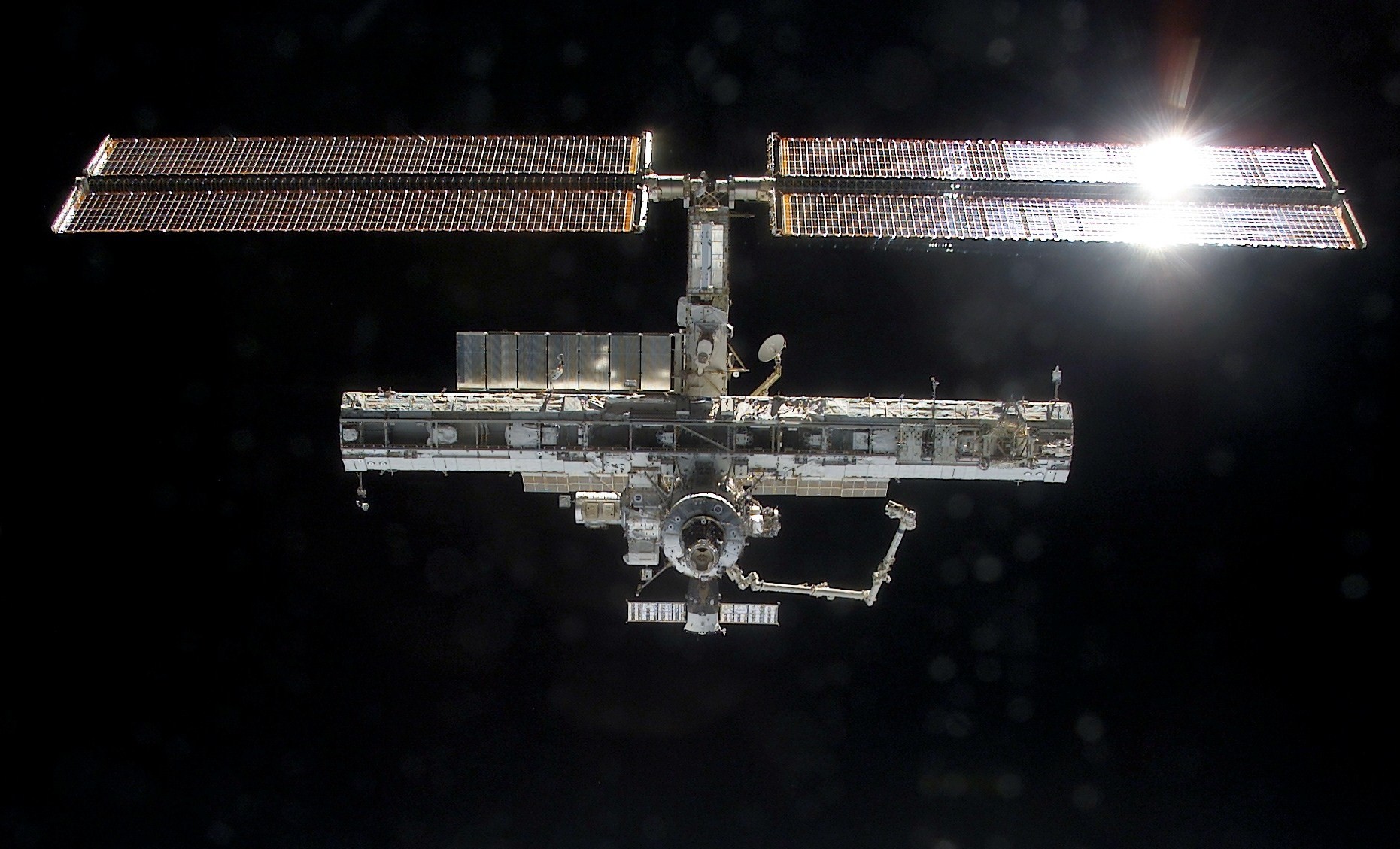
Extending the backbone – December 2, 2002
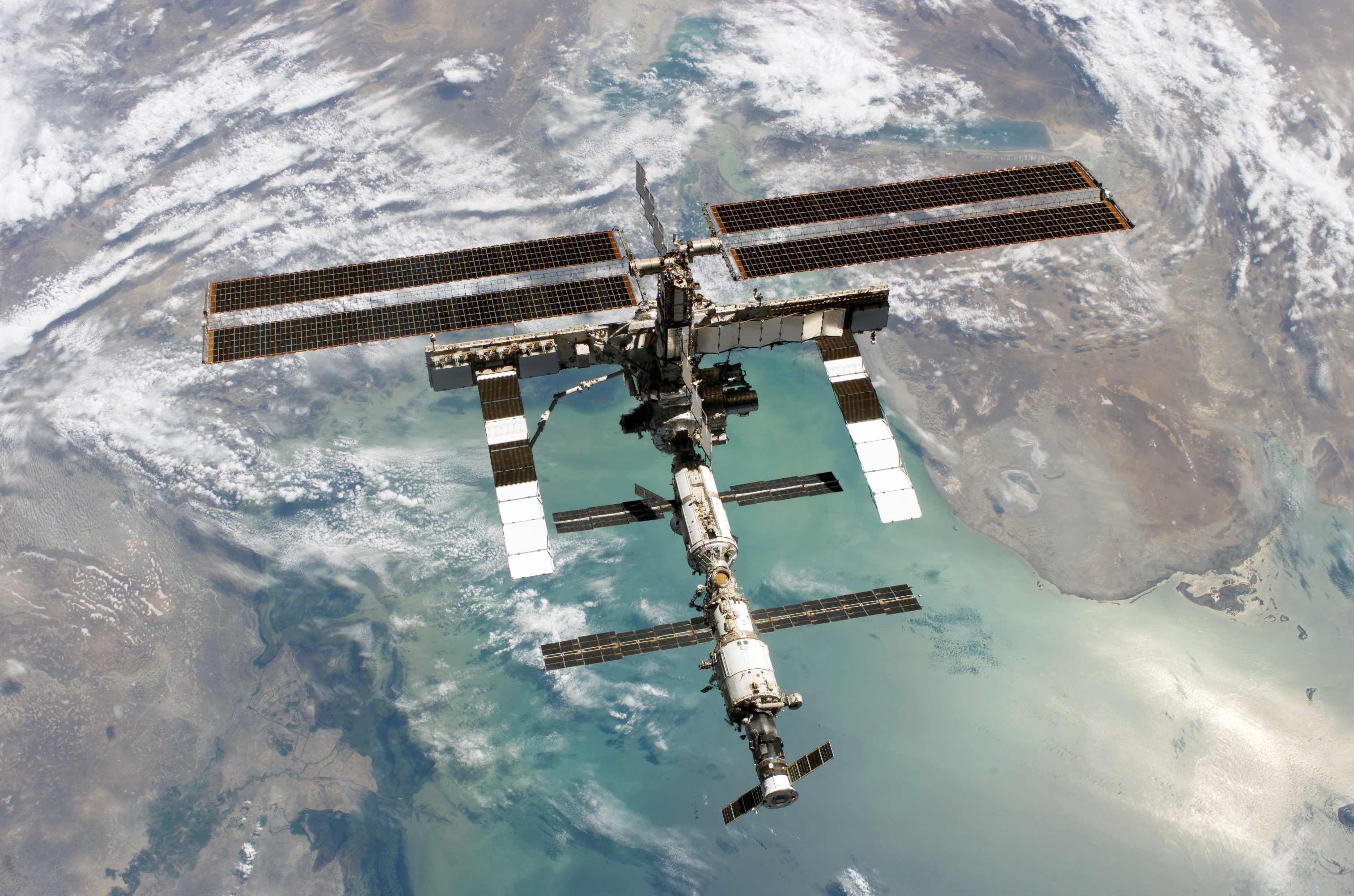
Return to flight – August 6, 2005
Backdropped by a colorful Earth, this aft zenith view of the International Space Station was photographed during the flyaround by the Space Shuttle Discovery following the undocking of the two spacecraft. Discovery pulled away from the complex at 2:24 a.m. CDT on August 6, 2005. The view in the background is over the North Caspian Sea and Kazakhstan. The STS-114 mission delivered supplies to the ISS and marked the return to flight of the Space Shuttle fleet after the Columbia disaster. Seventeen years prior, Discovery had flown NASA’s previous Return to Flight mission, STS-26.
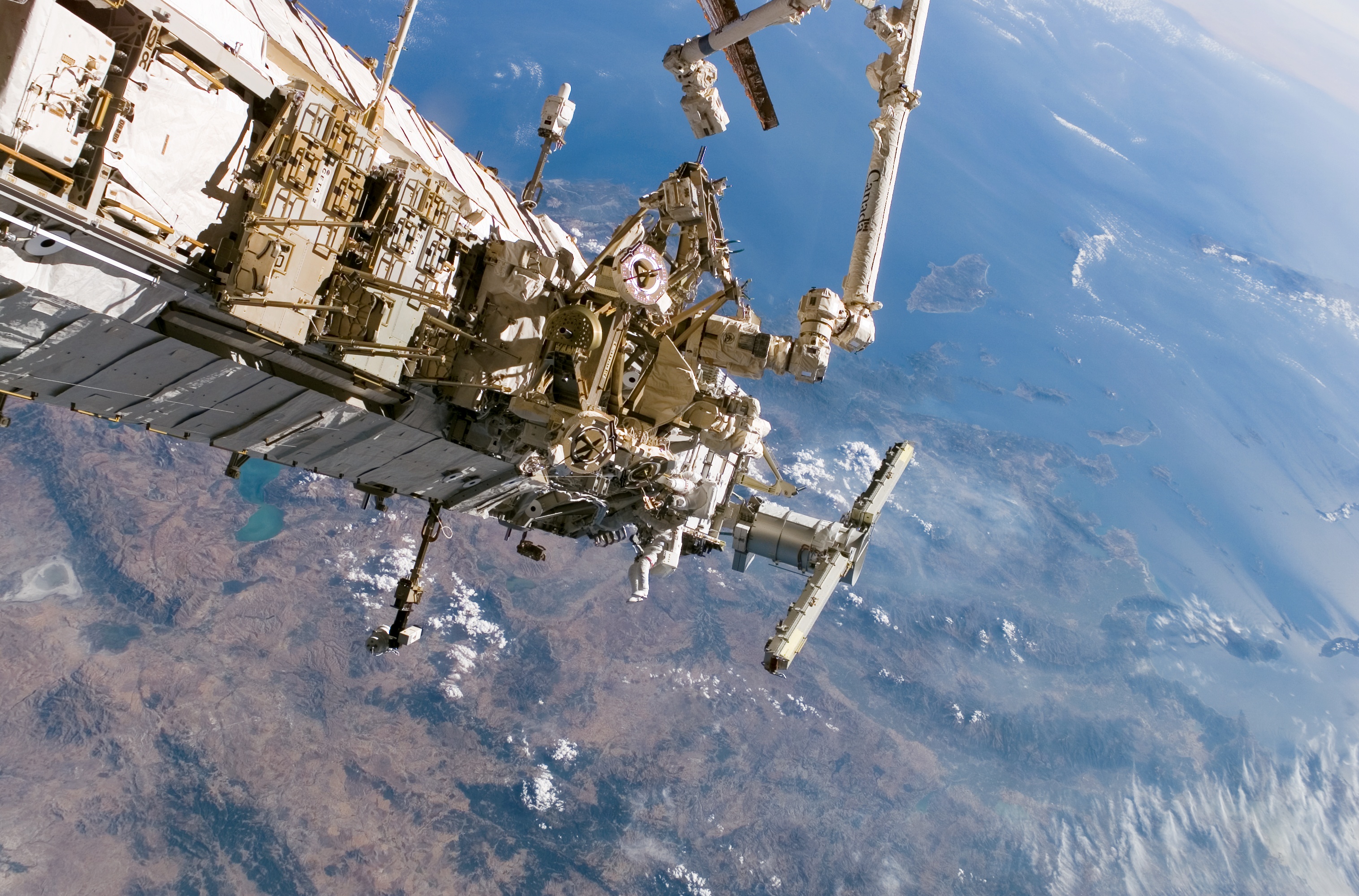
Find the spacewalkers – September 6, 2006
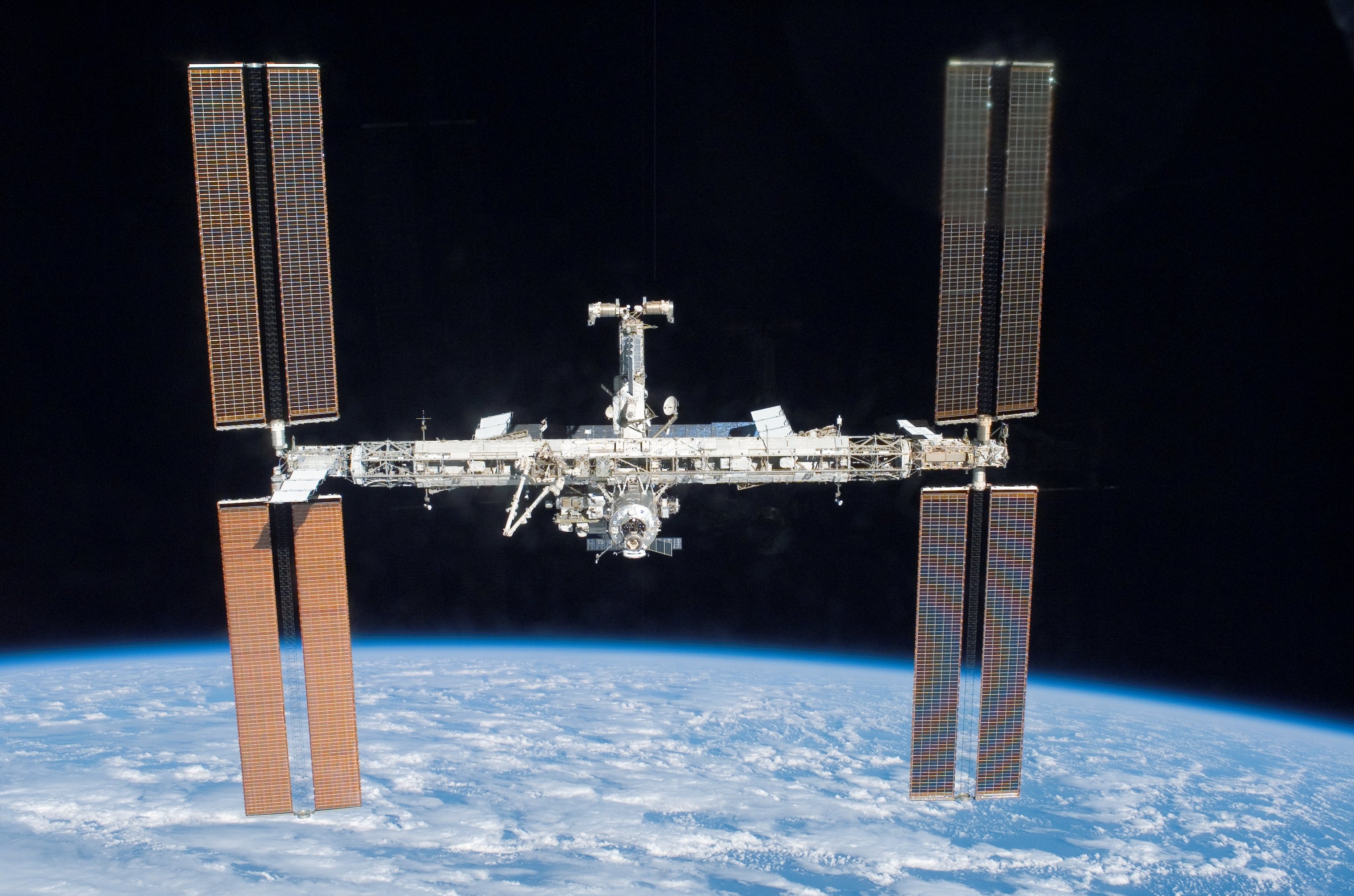
Beefing up the ISS – June 19, 2007
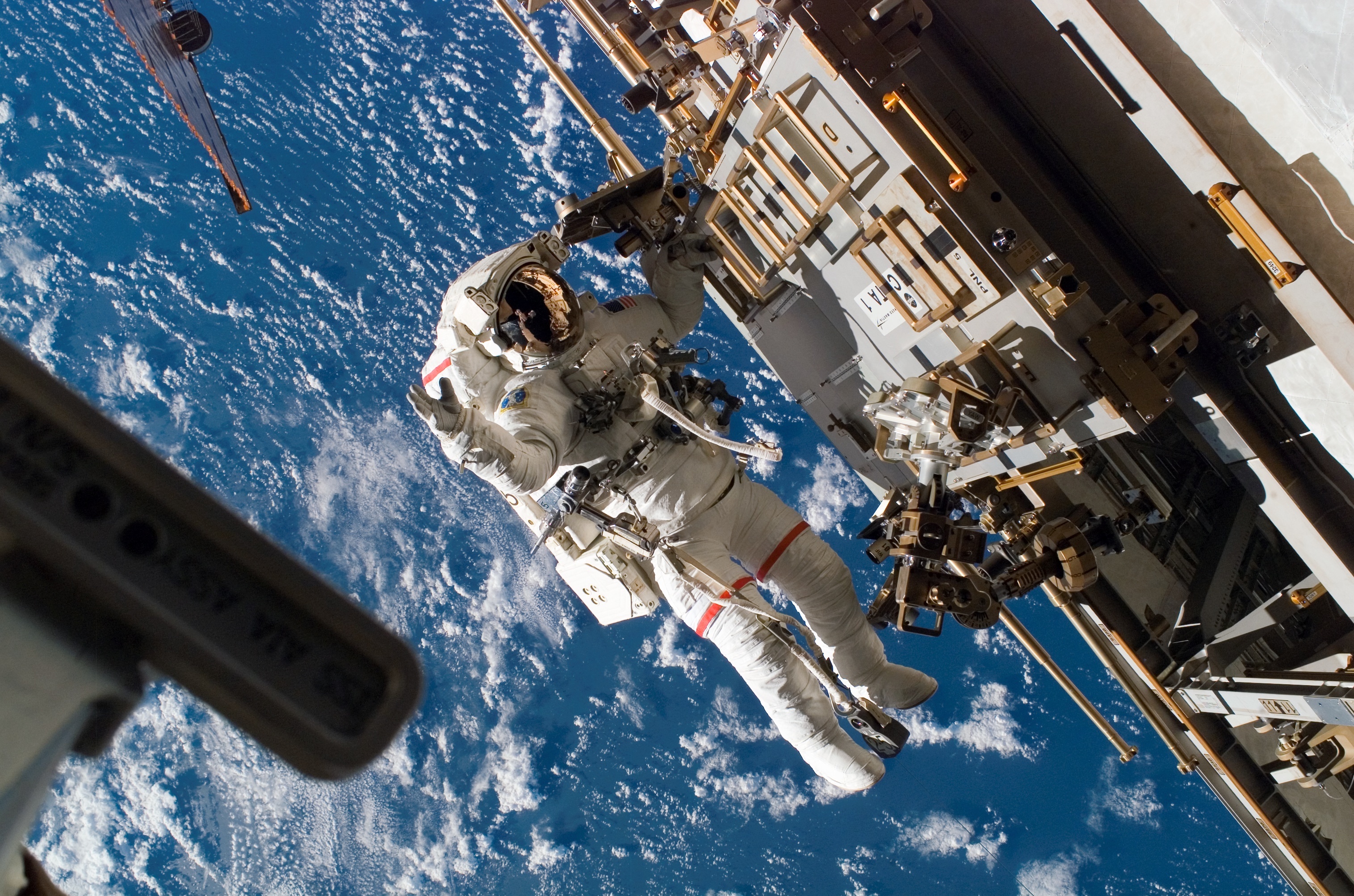
Workplace with an ocean view – August 15, 2007
Astronaut Rick Mastracchio, STS-118 mission specialist, participates in the mission’s third planned spacewalk or extravehicular activity (EVA) on Aug. 15, 2007, as construction and maintenance continue on the International Space Station. During the 5-hour, 28-minute spacewalk, Mastracchio and astronaut Clay Anderson (out of frame), Expedition 15 flight engineer, relocated the S-Band Antenna Sub-Assembly from Port 6 (P6) to Port 1 (P1) truss, installed a new transponder on P1 and retrieved the P6 transponder.
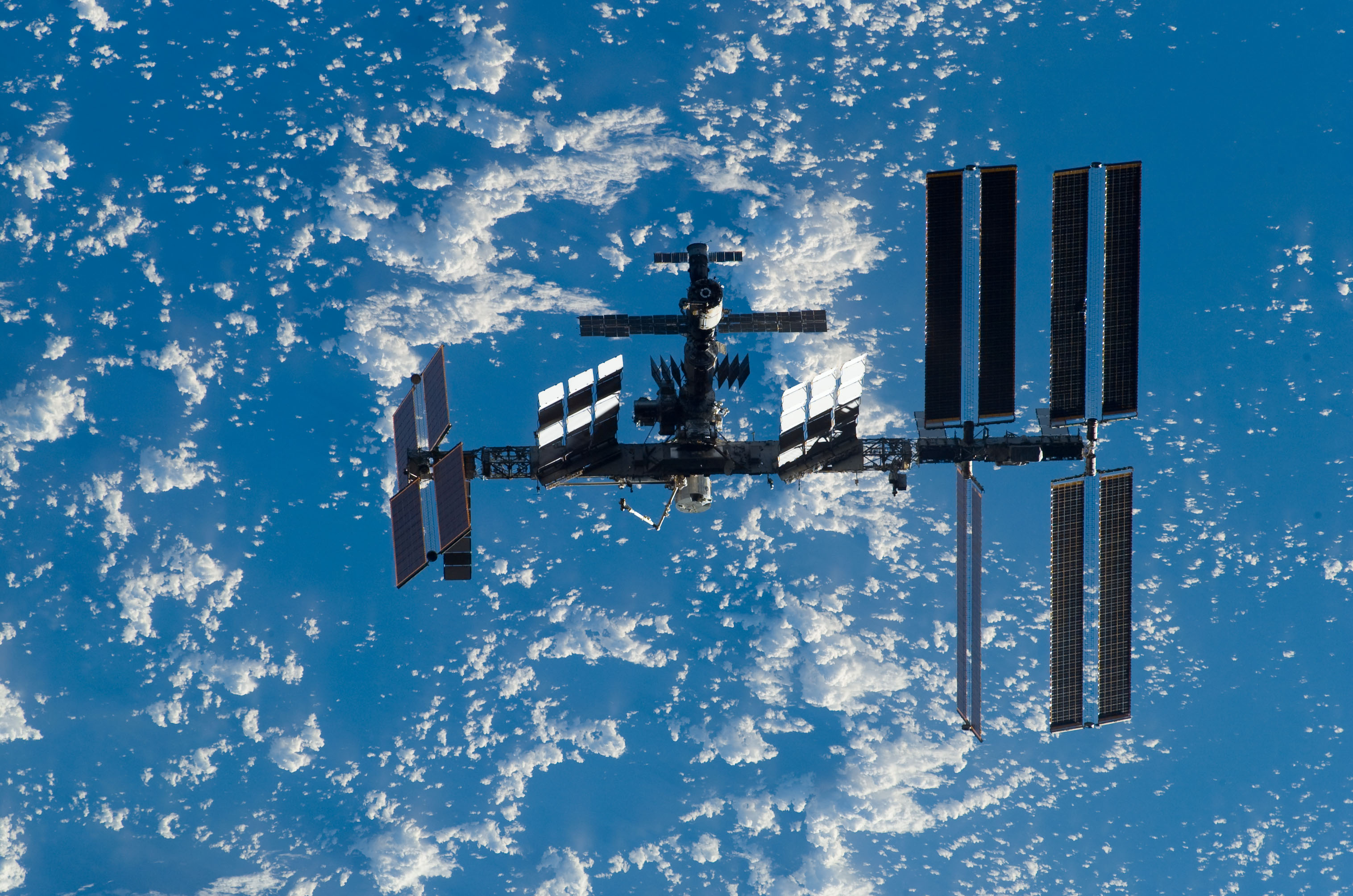
Home away from home – March 23, 2008
Flyaround view of the International Space Station taken from Space Shuttle Endeavor after undocking. STS-123 was the twenty-fifth shuttle mission to visit the ISS, and delivered the Japanese Experiment Module (Kibō), and the Canadian Special Purpose Dexterous Manipulator, Dextre robotics system, to the station. The mission duration was 15 days and 18 hours. It was the first mission to fully utilize the Station-to-Shuttle Power Transfer System, allowing ISS power to augment the orbiter’s power systems. The mission set a record for a Space Shuttle’s longest stay at the ISS.
See the ISS pass overheard
Visible to the naked eye, the ISS looks like a plane only much higher and traveling thousands of miles an hour faster!
Get email or text alerts when the space station is flying over.
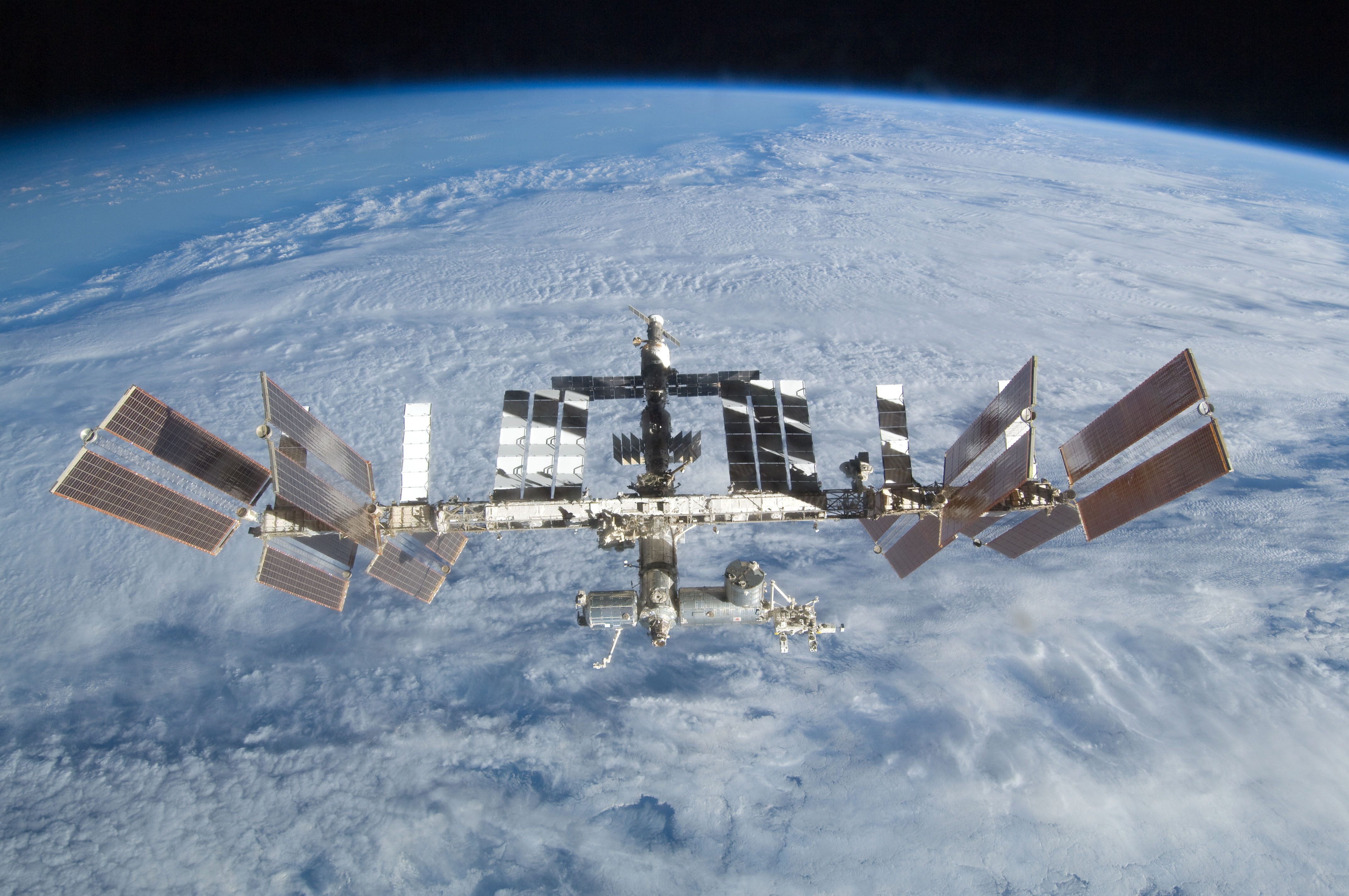
Soaring above the clouds – September 8, 2009
Backdropped by Earth’s horizon and the blackness of space, the International Space Station is seen from Space Shuttle Discovery as the two spacecraft begin their relative separation. Earlier the STS-128 and Expedition 20 crew concluded nine days of cooperative work onboard the Space Shuttle and the ISS. Discovery carried the Multi-Purpose Logistics Module Leonardo as its primary payload. Leonardo contained a collection of experiments for studying the physics and chemistry of microgravity. The Space Shuttle also flew the first test flight of the TriDAR, a 3D dual-sensing laser camera, intended for potential use as an autonomous rendezvous and docking sensor. STS-128 was the final Space Shuttle flight used for ISS crew rotation.
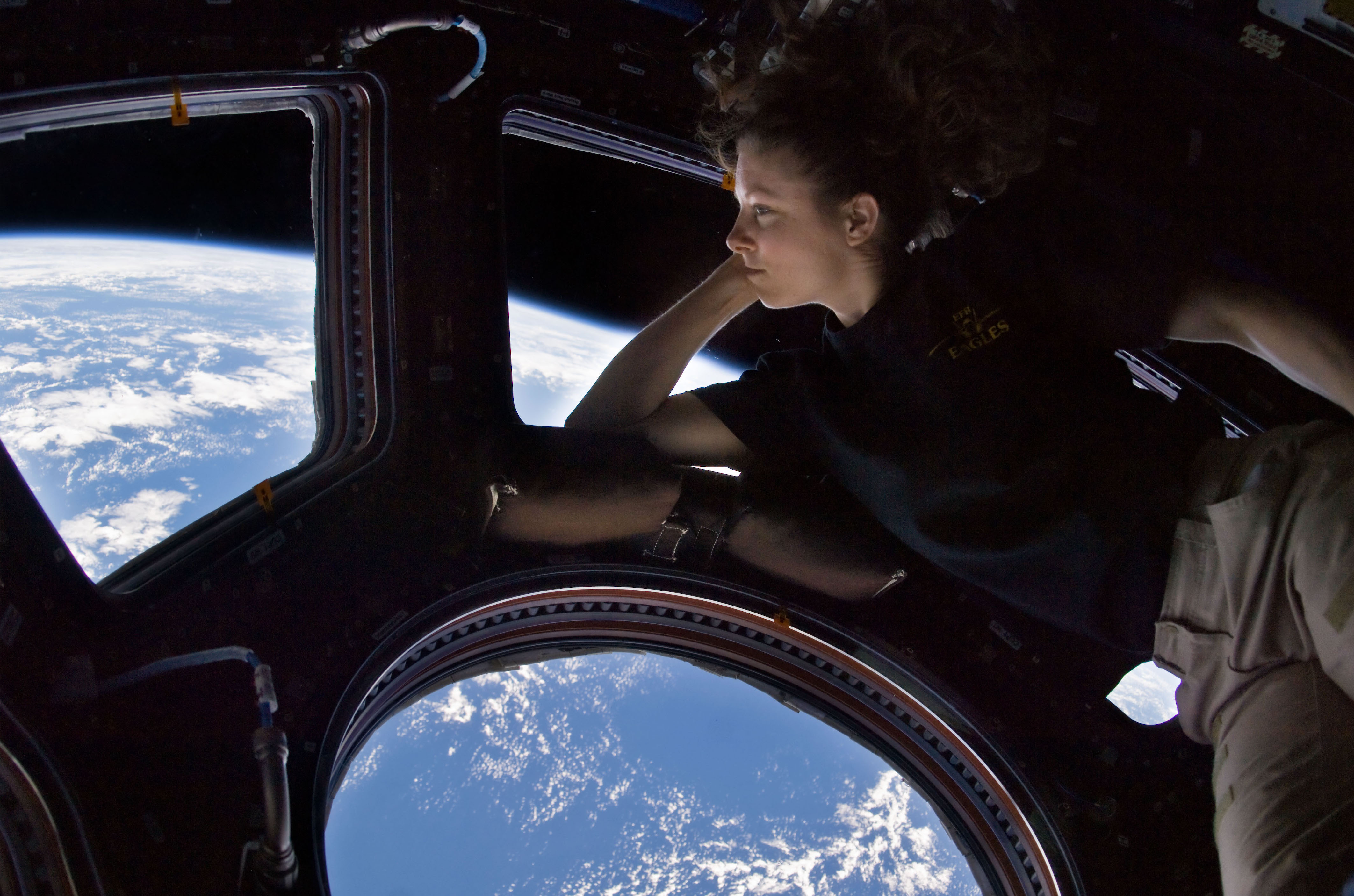
Earthgazing from the cupola – September 11, 2010
NASA astronaut Tracy Caldwell Dyson, Expedition 24 flight engineer, looks through a window in the Cupola of the International Space Station. A blue and white part of Earth and the blackness of space are visible through the windows. The image was a self-portrait using natural light.
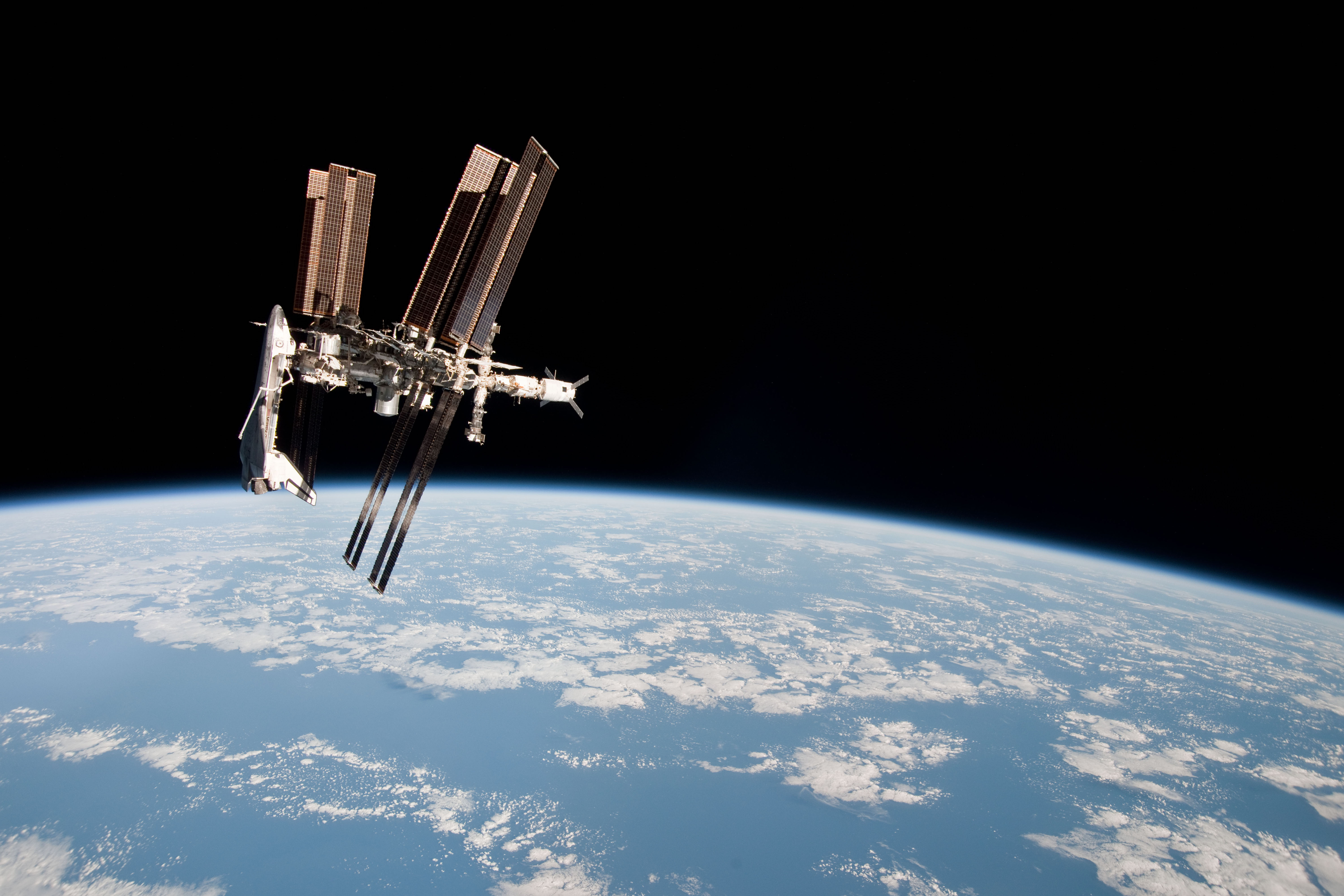
Unique perspective – May 23, 2011
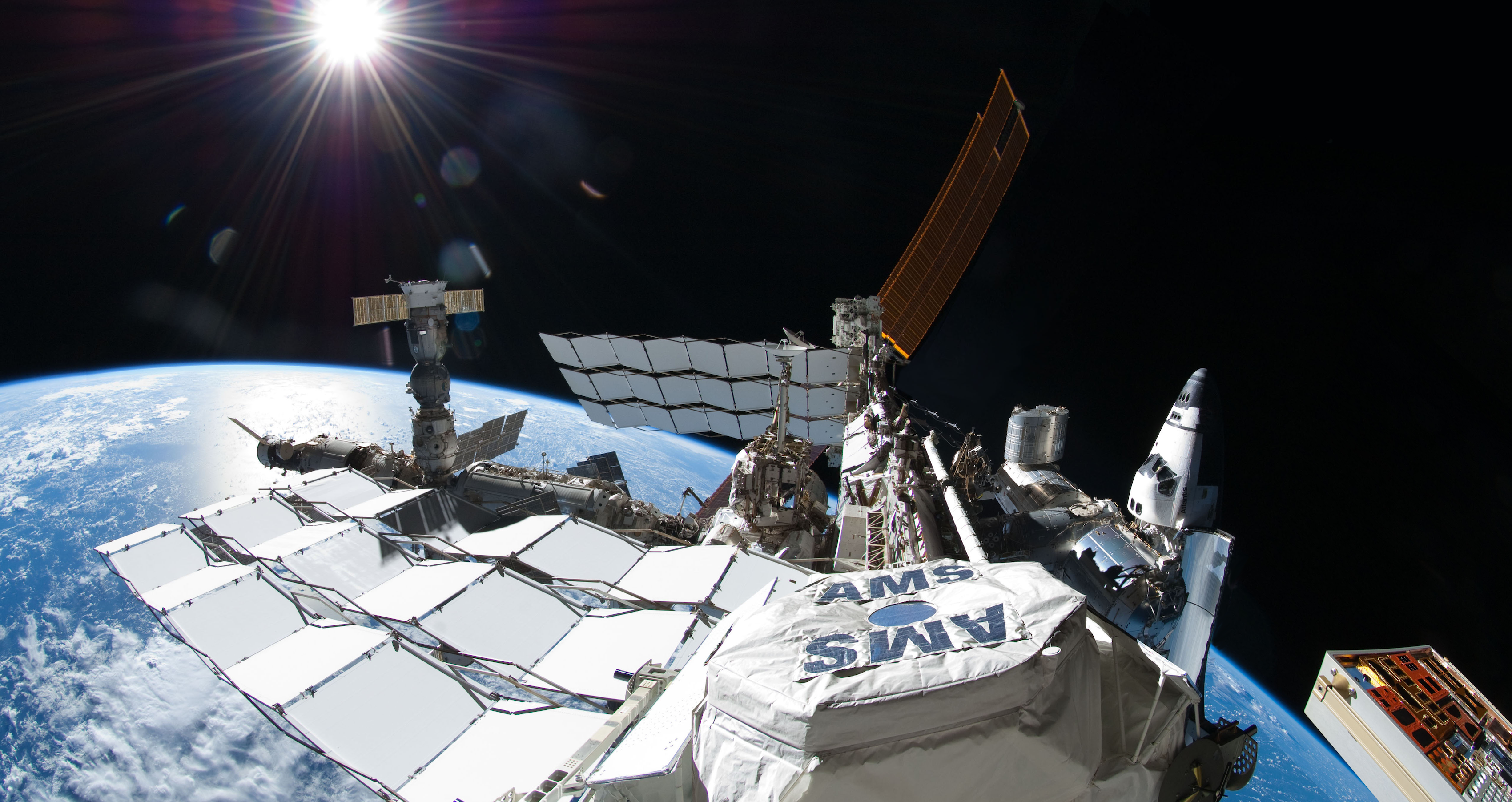
Last call for the Space Shuttle – July 12, 2011
Flight day five of the final Space Shuttle mission, and the last servicing call to the ISS, saw Expedition 28 Flight Engineers Mike Fossum and Ron Garan perform a spacewalk. Because of a short training flow and a requirement to launch the Atlantis orbiter with a reduced crew of four, NASA opted not to utilize two spacewalkers from the STS-135 crew. The main tasks for the spacewalk included retrieving a failed pump module from an external stowage platform of the ISS for return to Earth inside the orbiter’s cargo bay, installing two experiments and repairing a new base for the station’s robotic arm.
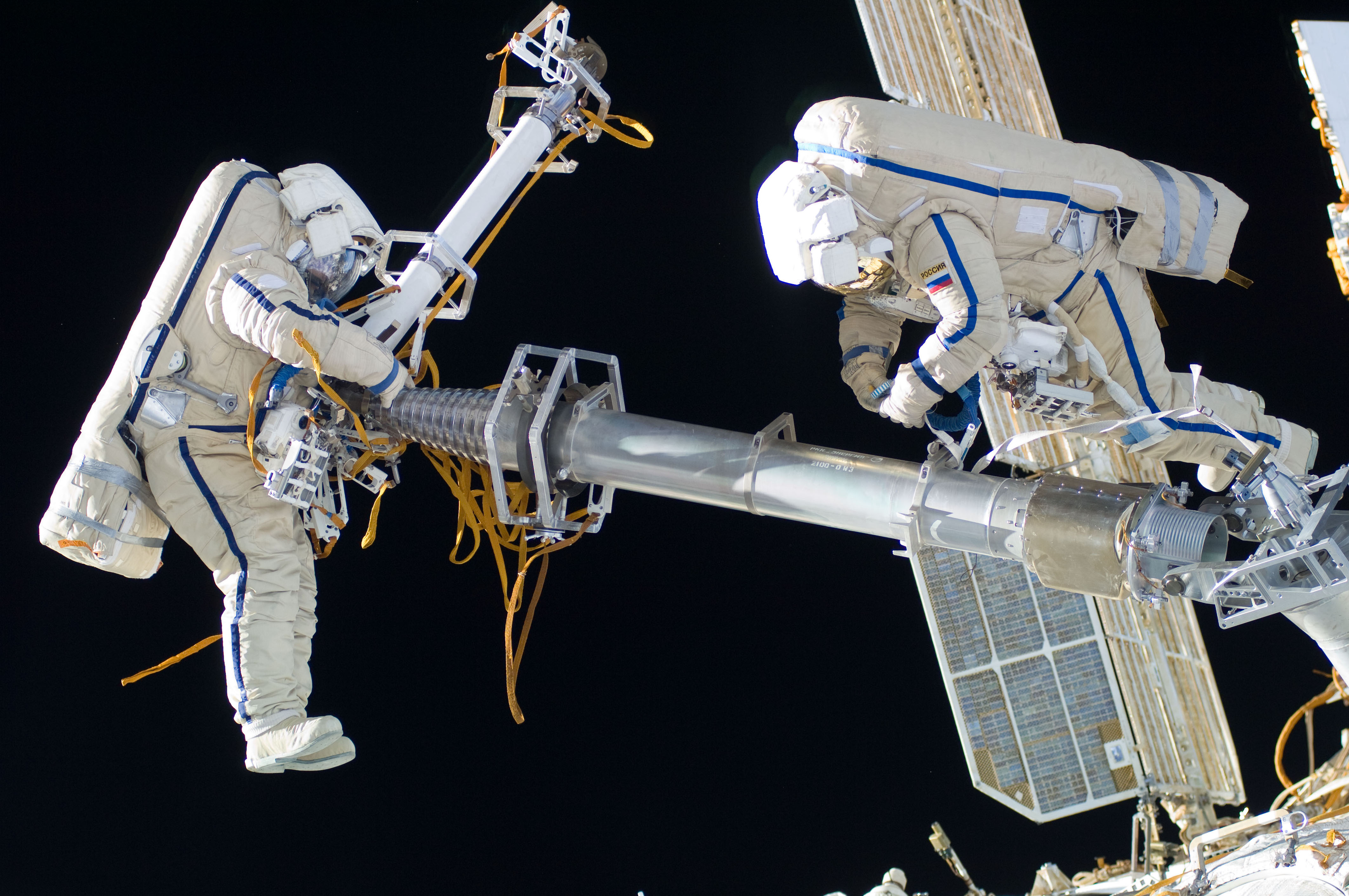
Relocation for future expansion – February 16, 2012
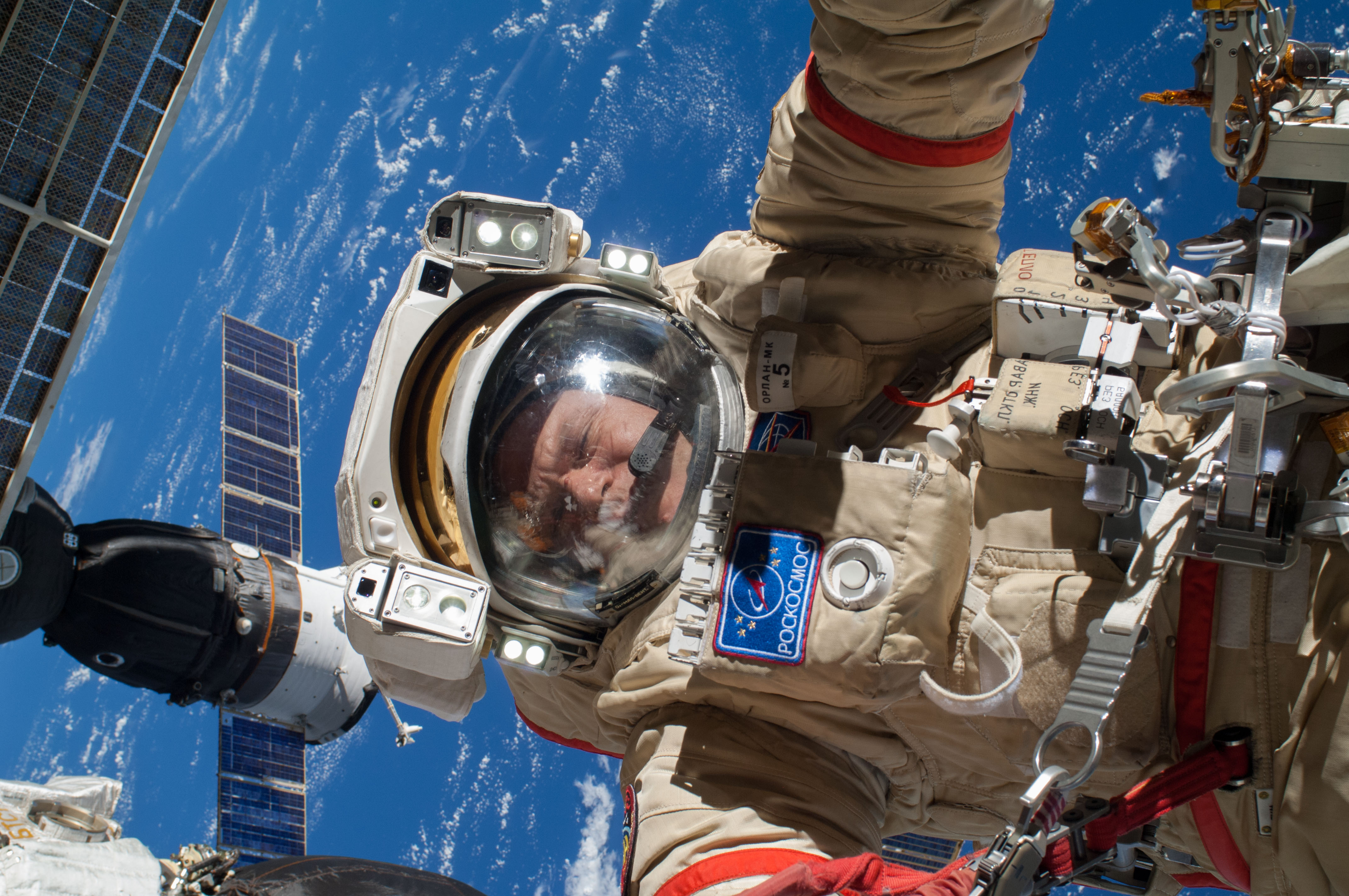
Out of this world maintenance – November 9, 2013
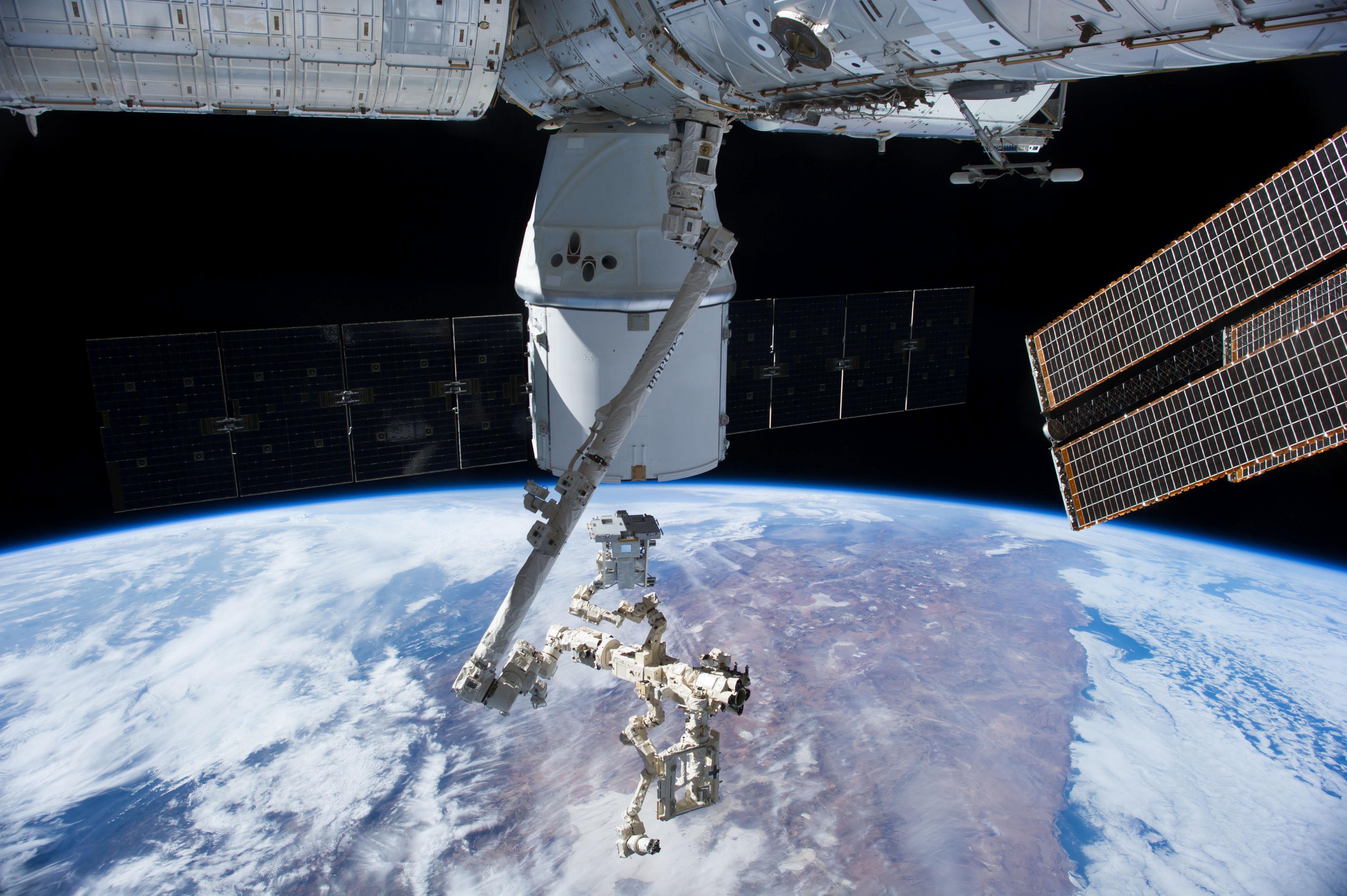
Studying the Earth – September 29, 2014
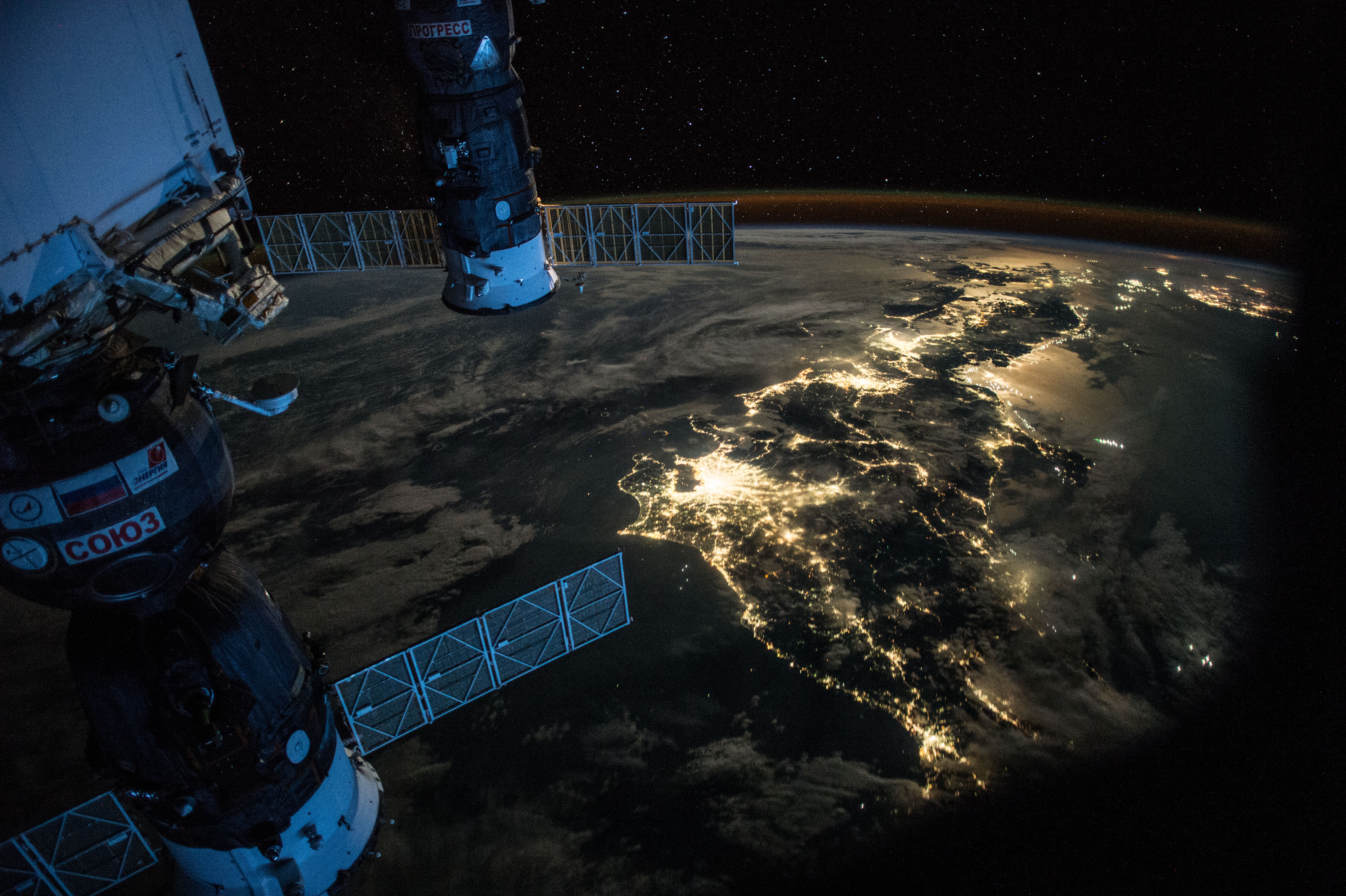
Earth as a nightlight – July 25 2015
Night Earth observation of Japan taken by Expedition 44 crewmember Scott Kelly, with a Soyuz Spacecraft connected to the Mini Research Module 1 (MRM1), and a Progress Spacecraft visible. Kelly posted this photo to Twitter on July 25 with the caption, “#Goodevening #Japan. Showing @Astro_Kimiya how to take pictures of #Earth at night. #YearInSpace.”
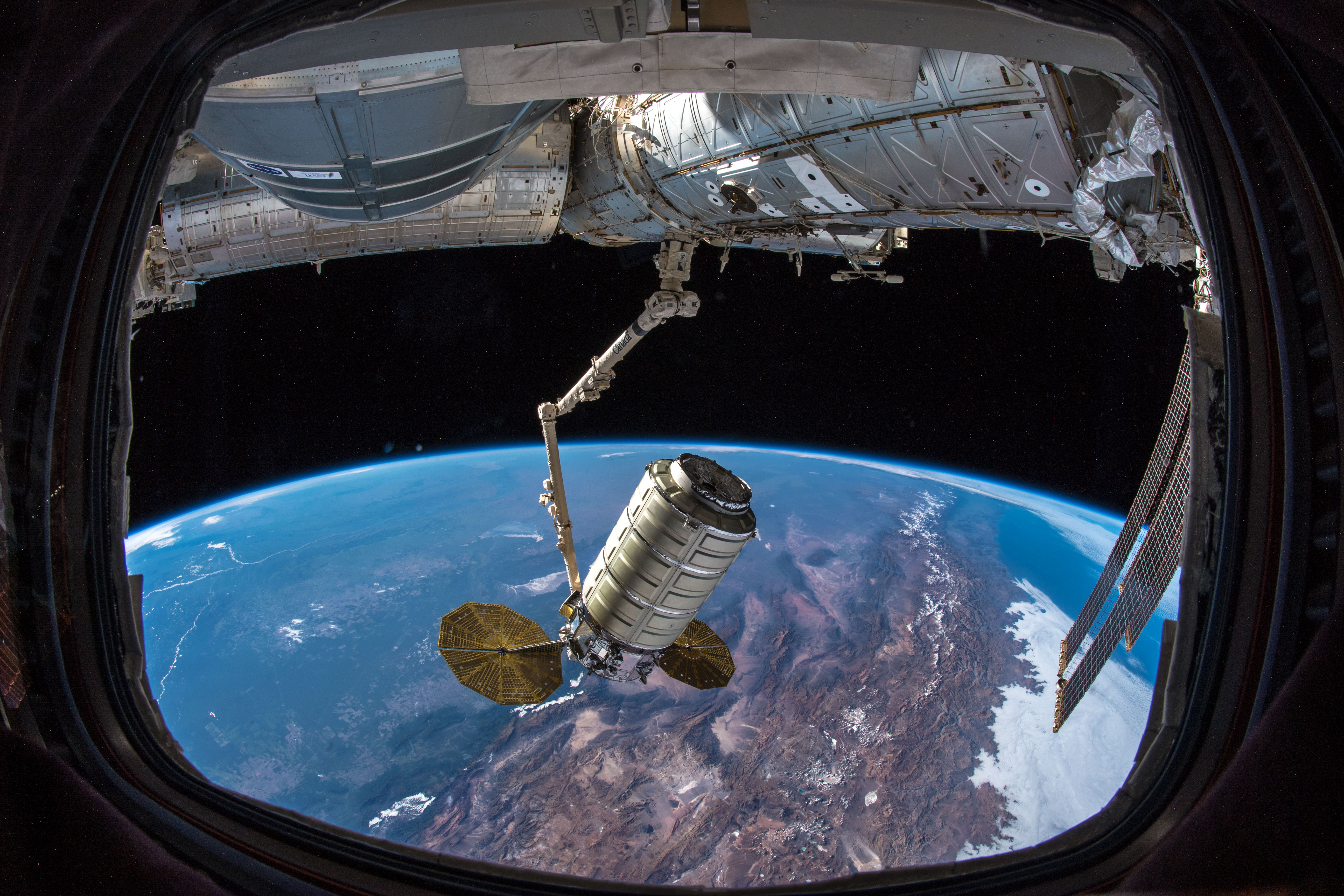
Resupplying the ISS – November 19, 2018
Northrop Grumman’s Cygnus space freighter with its prominent cymbal-shaped UltraFlex solar arrays is pictured in the grips of the Canadarm2 robotic arm after it was captured by Expedition 57 Flight Engineer Serena Auñón-Chancellor and ESA astronaut Alexander Gerst.
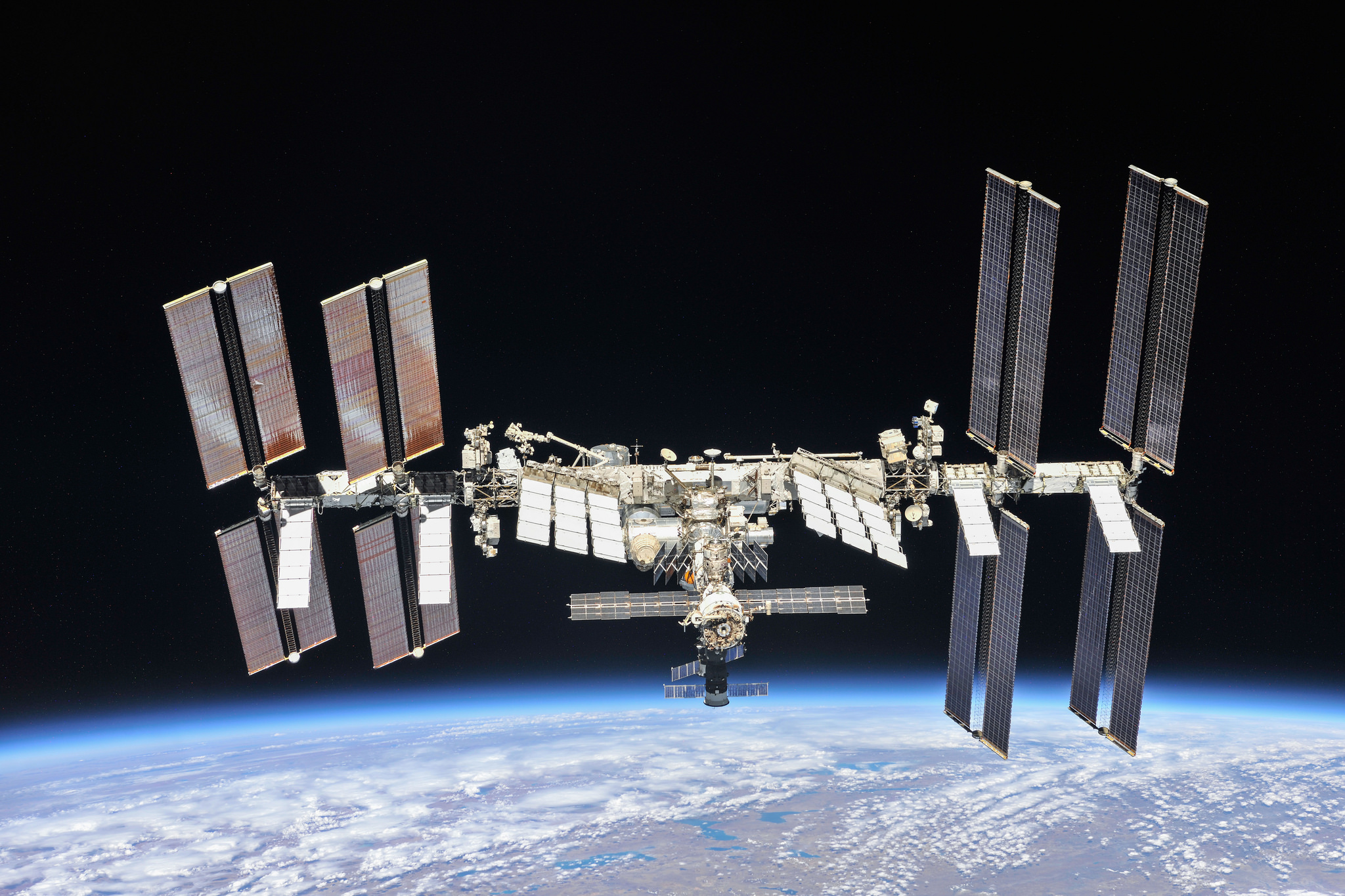
A journey of knowledge – October 4, 2018
The International Space Station photographed by Expedition 56 crew members from a Soyuz spacecraft after undocking. NASA astronauts Andrew Feustel and Ricky Arnold and Roscosmos cosmonaut Oleg Artemyev executed a fly around of the orbiting laboratory to take pictures of the station before returning home after spending 197 days in space. In this image from October 2018, the fully completed station continues its mission to conduct microgravity research and experiments — ranging from human physiology to astronomy aboard humanity’s only orbital laboratory.
International Space Station Facts
- 230 individuals from 18 countries have visited the International Space Station.
- The space station has been continuously occupied since November 2000.
- An international crew of six people live and work while traveling at a speed of five miles per second, orbiting Earth about every 90 minutes.
- In 24 hours, the space station makes 16 orbits of Earth, traveling through 16 sunrises and sunsets.
- Peggy Whitson set the record for spending the most total time living and working in space at 665 days on Sept. 2, 2017.
- The acre of solar panels that power the station means sometimes you can look up in the sky at dawn or dusk and see the spaceship flying over your home, even if you live in a big city. Find sighting opportunities at http://spotthestation.nasa.gov.
- The living and working space in the station is larger than a six-bedroom house (and has six sleeping quarters, two bathrooms, a gym, and a 360-degree view bay window).
- To mitigate the loss of muscle and bone mass in the human body in microgravity, the astronauts work out at least two hours a day.
- Astronauts and cosmonauts have conducted more than 205 spacewalks (and counting!) for space station construction, maintenance and repair since December 1998.
- The solar array wingspan (240 feet) is about the same length as the world’s largest passenger aircraft, the Airbus A380.
- The large modules and other pieces of the station were delivered on 42 assembly flights, 37 on the U.S. space shuttles and five on Russian Proton/Soyuz rockets.
- The space station is 357 feet end-to-end, one yard shy of the full length of an American football field including the end zones.
- Eight miles of wire connects the electrical power system aboard the space station.
- The 55-foot robotic Canadarm2 has seven different joints and two end-effectors, or hands, and is used to move entire modules, deploy science experiments and even transport spacewalking astronauts.
- Six spaceships can be connected to the space station at once.
- A spacecraft can arrive at the space station as soon as six hours after launching from Earth.
- Four different cargo spacecraft deliver science, cargo and supplies: Orbital ATK’s Cygnus, SpaceX’s Dragon, JAXA’s HTV, and the Russian Progress.
- Through Expedition 52, the microgravity laboratory has hosted more than 2,400 research investigations from researchers in more than 103 countries.
- The station’s orbital path takes it over 90 percent of the Earth’s population, with astronauts taking millions of images of the planet below. Check them out at https://eol.jsc.nasa.gov.
- More than 20 different research payloads can be hosted outside the station at once, including Earth sensing equipment, materials science payloads, particle physics experiments like the Alpha Magnetic Spectrometer-02 and more.
- The space station travels an equivalent distance to the Moon and back in about a day.
- The Water Recovery System reduces crew dependence on water delivered by a cargo spacecraft by 65 percent – from about 1 gallon a day to a third of a gallon.
- On-orbit software monitors approximately 350,000 sensors, ensuring station and crew health and safety.
- The space station has an internal pressurized volume equal that of a Boeing 747.
- More than 50 computers control the systems on the space station.
- More than 3 million lines of software code on the ground support more than 1.5 million lines of flight software code.
- In the International Space Station’s U.S. segment alone, more than 1.5 million lines of flight software code run on 44 computers communicating via 100 data networks transferring 400,000 signals (e.g. pressure or temperature measurements, valve positions, etc.).
International Space Station Size & Mass
- Pressurized Module Length: 240 feet (73 meters)
- Truss Length: 357.5 feet (109 meters)
- Solar Array Length: 239.4 feet (73 meters)
- Mass: 925,335 pounds (419,725 kilograms)
- Habitable Volume: 13,696 cubic feet (388 cubic meters) not including visiting vehicles
- Pressurized Volume: 32,333 cubic feet (916 cubic meters)
- With BEAM expanded: 32,898 cubic feet (932 cubic meters)
- Power Generation: 8 solar arrays provide 75 to 90 kilowatts of power
- Lines of Computer Code: approximately 2.3 million

